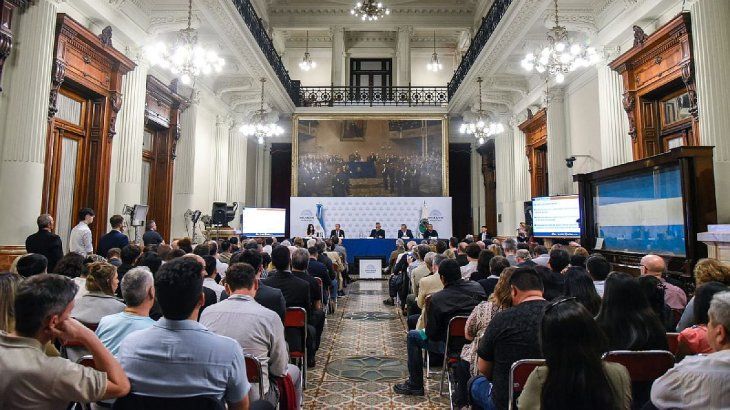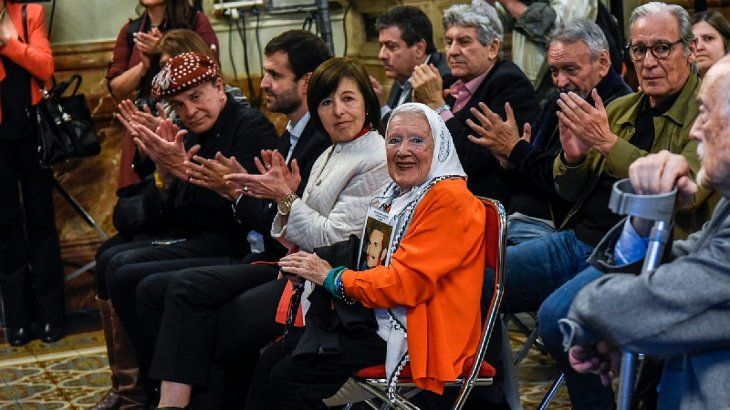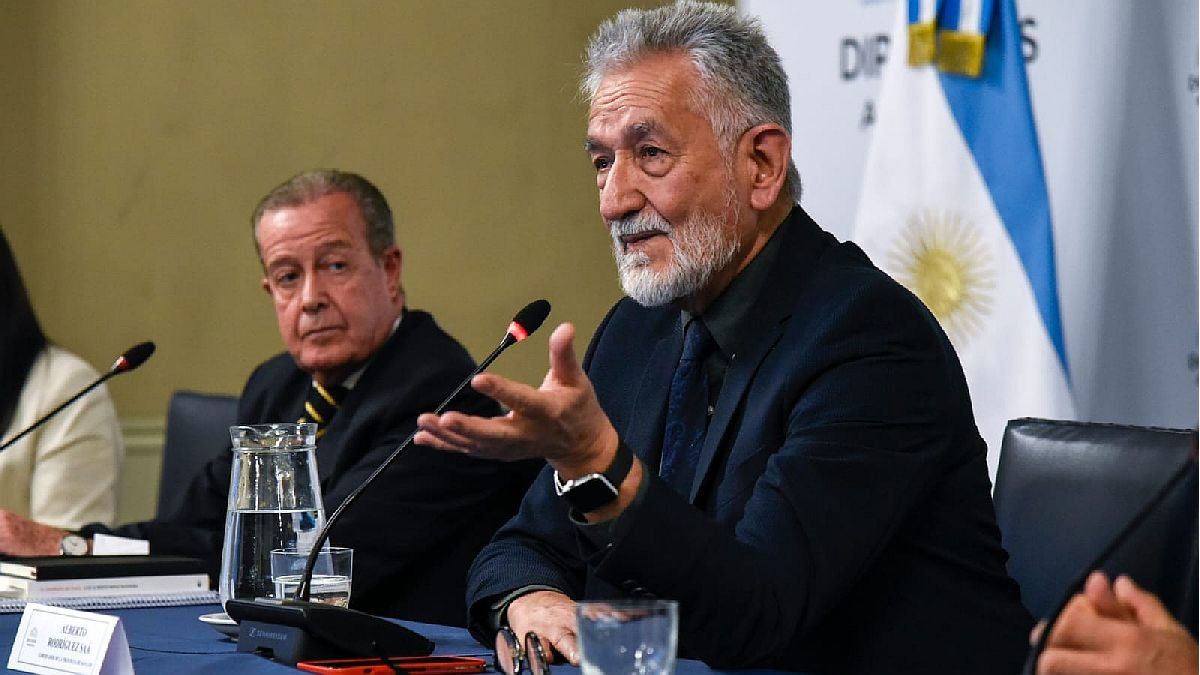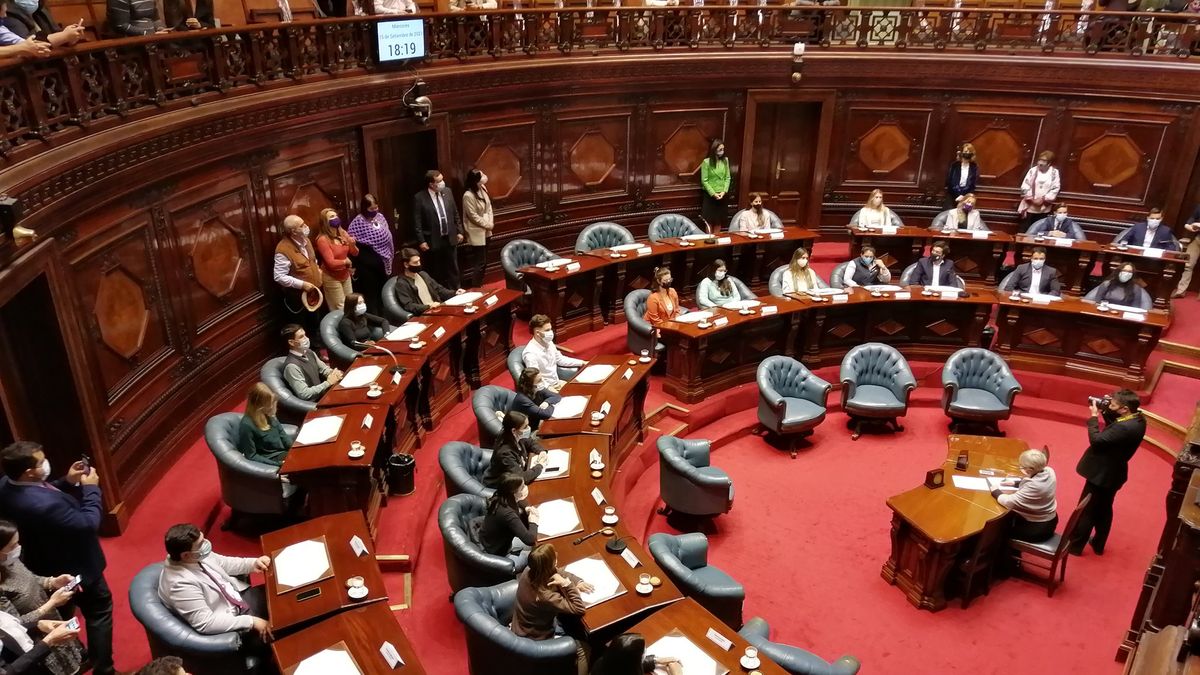“Denialism is the worst, it is a deliberate policy of people who prevent you from discussing a subject that is a very strong truth”said Rodríguez Saá when presenting the ODP in Congress, and added: “The observatories are a permanent source of democratic information and accessible to anyone, which enable you to take a second step, which is a space for discussion, exchange, listening to other voices and ends with a proposal, and this becomes the possibility of a militant action or concrete political actions”.
Alberto Rodríguez Saa Public Debt Observatory.jpg
Rodríguez Saá explained that the Observatory “It is as if it were an epistemological look at the external debt, that is why this has information, discussion and proposals; it has an academic character and that is why a person like Alejandro Olmos is sitting in front of it, a person who is the most knowledgeable about foreign debt and his team”.
Last week the president presented the Environmental and Climate Change Observatory of the ULP. “Like the foreign debt, it is a matter of hiding. It is a negationist form”, justified. as far as he could tell Ambitthe ODP will prepare reports that serve as tools for a global vision of the problem of public indebtedness with its own research.
After reviewing the origin of the Argentine debt, which was contracted in 1824 Bernardino Rivadavia with Baring Brothers for 1 million pounds sterling, and from which only part of the funds were received, and no work was done, the San Luis governor assured that “the history of Argentina’s foreign debt is the history of corruption” .
Public Debt Observatory Congress.jpg

“With the debt not even a sewer has been built. With US$382,000 million, a highway can be built with a polyduct, which carries water, gas, oil, internet, from Río Gallegos to Salta, through the center and through the mountain range, along the Atlantic coast to Misiones. From east to west you can do the same thing 6 times and we have just spent US$60 billion. We can build five Atuchas, all the schools and universities, and 5 million homes, and we are only at $200 billion. I leave you the other US$180,000 million so you can think about what other things we could have done with that money”posed in the Hall of Lost Steps.
Alexander Olmos Gaona He stressed that the creation is an initiative of the president, who was the “only one of the governors” who questioned the agreement with the fund when that meeting was held where everyone presented their positions. “The issue of debt is very old and has always been invisible, except when you have to pay or refinance and discuss. For me it is very pleasing that the Observatory is presented in the National Congress, because Congress is the only one authorized to settle the debt, and unfortunately it delegated that function in 1992, until today, through Law 24,156. A manifestly unconstitutional law in that delegation part and despite the efforts to want to change it, it could not be changed, ”said Olmos Gaona, who was also the main advisor in the restructuring of Ecuador’s debt, which was carried out by the former president. Rafael Correa.
Alejandro Olmos Gaona.jpg

The expert indicated that the ODP, in addition to observing, has the purpose of “showing what is not shown, putting in evidence what is not known.” According to him, because “many times I have been told one goes to the website of the Ministry of Economy and there you have the indebtedness figures, but there the only thing there are are figures, there are no contracts that are shown, there are no clauses of submission to foreign legislation that are put in evidence, there are no discussions of how such a debt has been contracted”.
Among the guests were present Nora Cortinas, from Mothers of Plaza de Mayo Founding Line; the musician Tarrago Ros; Juan Archivaldo Lanusthe former Secretary of Foreign Affairs and in Paris; Miguel Speche Gil, holder of the Debt Chair of the Faculty of Law of the UBA; lawyer Eduardo Barcesat; Grace Gonzalezpresident of the Debt Institute, of the Public Bar Association; Gabriel Mariottoformer deputy governor of Buenos Aires and current Parlasur deputy, and the three host national deputies Carlos Ponce, Lia Caliva, and Juan Carlos Alderete.
Nora Coriñas.jpg

“It is an honor, a pleasure, to be able to present this observatory in such an emblematic hall”, referred Ponce from San Luis in the lower house, and stressed that the Argentine debt seems to be an issue that “we want to keep under the rug.” “We, speaking with the deputies, are inspired to make this problem visible, which I say is the main problem that all Argentines have,” he warned. “San Luis is looking and making itself available, exposing itself to humanity, so that it can access this observatory and all the policies that it is carrying out”added Ponce later, according to a press release from the ULP.
Legislator Caliva revealed that when she participated in the previous presentation at the Casa de San Luis, she was “impressed” with the observatory. “I want to thank you Governor for this initiative, for this instrument that democratizes information regarding our country’s public debt”, he pointed. In addition, he indicated that the information will be available to “any” student, militant, specialist. “It is impressive to see in real time how the debt grows and in a timeline that gives clear signs of the situation,” she remarked.
Meanwhile, Deputy Alderete considered that the debt issue, which has been discussed for many years, is about “submission and of our sovereignty”. “Discussing the issue of the debt and the IMF is a current and highly urgent problem. This initiative is important, and that we can discuss it in the Chamber of Deputies of the Nation”, he concluded.
Source: Ambito
David William is a talented author who has made a name for himself in the world of writing. He is a professional author who writes on a wide range of topics, from general interest to opinion news. David is currently working as a writer at 24 hours worlds where he brings his unique perspective and in-depth research to his articles, making them both informative and engaging.




